Hibiscus: Seasonal Ingredient Spotlight
Why we should all be incorporating it into our recipes and growing it in our gardens
I hope you all had a lovely Thanksgiving. Sebastian and I decided to roast a duck for the first time this holiday, for our Friendsgiving feast. Cooking for our friends has become an annual tradition that we’ve both really come to enjoy.
While cooking for our families is also great, when you have a table surrounded by like-minded friends who also appreciate local, organic, and home-grown ingredients, it makes sharing a meal full of those things that much more special.
In addition to the duck, I made sourdough stuffing using chicken bone broth (one of my favorite Thanksgiving dishes) and ginger hibiscus jam to go along with the meat. You can think of this as your seasonal, homegrown version of cranberry sauce.
I first made this sauce last Thanksgiving after discovering my now farmer friend’s abundance of locally grown hibiscus at the market. I quickly fell in love with it as an ingredient for sauces, stews, and, of course, teas.
Now, we have an abundance of hibiscus growing in our own garden. I’ve been harvesting it nearly every morning for the last two months. It just keeps on growing and I am definitely not complaining. I currently have 3 large glass containers with dried hibiscus for homemade herbal teas.
In this article, I want to highlight this seasonal ingredient that I’ve come to know and love. I will discuss all of its benefits and why it’s so good for us, how to grow it, and how to take it from garden to kitchen and make the most delicious recipes.
Benefits of Hibiscus
Hibiscus is a common ingredient found in Mexican and African cultures. You may have heard of it as the main ingredient in agua de jamaica or bissap.
I first started really paying attention to hibiscus when I noticed it in all of my favorite herbal tea blends from Drink Symbi. It’s in their Cycle Harmony Tea, Daily Hydration Tea, and Kidney Support Tea. I thought, huh, there must be something here.
While I originally fell in love with hibiscus for its flavor, I came to learn that hibiscus is extremely high in antioxidants, making it a great herb for preventing chronic illnesses associated with oxidative stress.
It’s high in B vitamins, Vitamin C, magnesium, and minerals as well.
Hibiscus has been shown to:
reduce cholesterol levels
prevent kidney stones
promote overall healthy kidneys
reduce the risk of heart disease
treat metabolic syndrome
protects skin from aging
It truly amazes me how many benefits one plant can have. Nature truly is medicine. No wonder we’re growing so much of it in our backyard!
Growing Hibiscus in Phoenix, Arizona
I would have never thought of hibiscus as a plant that thrives in the desert. It originated in tropical regions such as India, Thailand, and West Africa. However, because of the heat here, it does very well. In fact, it was the only thing we planted that made it through the hot 110+ degree summer.
We planted our roselle hibiscus seeds at the end of May and came home in September to 3 huge bushes overtaking our containers. The flowers began blooming at the beginning of October, and we’ve had an abundant harvest ever since.
With roselle hibiscus (the type you grow to eat), initial buds form. Then, these buds flower for just a day. Hummingbirds, bees, and birds flock to pollinate these flowers. After being pollinated, they grow into a calyx. When the seed pod inside the calyx is the size of a gumball, they are ready to harvest!
In our first large harvest, I experienced a huge problem with mold. Because the flower tends to shrivel up and sit inside the calyx, excess moisture is drawn in. Being extremely health conscious, there was no way that I was going to eat hibiscus covered in mold.
I made it a point to go around the garden every morning and remove the shriveled flowers from each pod after being pollinated. Eventually, we were able to harvest completely mold-free calyxes!
When buying hibiscus, make sure you are buying it from a reputable source that uses mold-free hibiscus. The plant is similar to coffee in that you need to be meticulous about the quality due to its susceptibility to mold.
Preserving and Cooking with Hibiscus
Hibiscus calyxes are delightful both fresh and dried. I wanted to make a point to dry enough hibiscus to use in herbal tea blends all year round, so most of the harvests I ended up dehydrating.
In order to dehydrate hibiscus, first you must remove the calyx petals from the seed pods. This is a tedious process but one that’s come to be quite meditative. After, you give them a rinse and let them dry. Set your dehydrator to 149 degrees for 6.5 hours and you will have perfectly dehydrated calyxes to use in all of your recipes.
I like to use the dried hibiscus along with some of my other favorite herbs high in minerals to make a tea to sip on throughout the day. This is a great replacement for water as it is high in minerals like potassium, magnesium, vitamin C, and vitamin B.
Daily Mineral Tea:
Empty the herbs into a large glass mason jar. Fill with boiling water. Put into the fridge overnight and strain the tea as you drink.
Hibiscus Crockpot Chuck Roast:
2 lb grass-fed beef chuck roast
1 yellow onion
1 cup dried hibiscus
5 cloves of garlic
cumin
oregano
1 tbsp tomato paste
1 cup organic red wine
1 cup filtered water
Saute the chopped onion and minced garlic in oil until soft. Add spices and tomato paste and cook for a few minutes. Add water and wine and simmer for 5-10 minutes. Pat chuck roast dried and brown on the stove without oil. Place in crockpot and pour sauce overtop. Cook on low overnight (10 hours) or on high for 4 hours if in a pinch.
Take action: I encourage you to experiment with dried hibiscus as an ingredient in teas, stews, and jams this holiday season. Not only is it amazing for your health, but it will add an unexpected flavorful twist to your favorite recipes. Don’t be afraid to experiment!
If you’d be interested in purchasing a small bag of dried hibiscus fresh from our garden, reply directly to this email and we will work something out. I want to spread the joy I have for this plant and all of the love I’ve put into growing and preparing it with the community!
With love,
Madison
PS: Sebastian and I would love to get to know you better. We want to learn more about how we can best serve you with our newsletter. Schedule free time to chat with us here. We look forward to meeting you!
If you enjoy our content, make sure to follow us on our other social media platforms!
Twitter/X: @backtoourroot
Instagram: @getbacktoourroots
Sebastian’s IG: @sebastianbullmoose
Maddie’s IG: @maemaddie

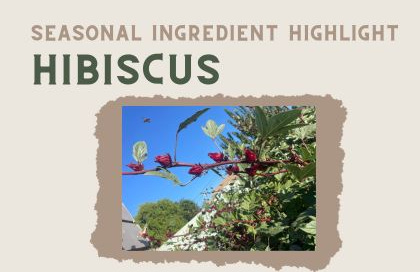


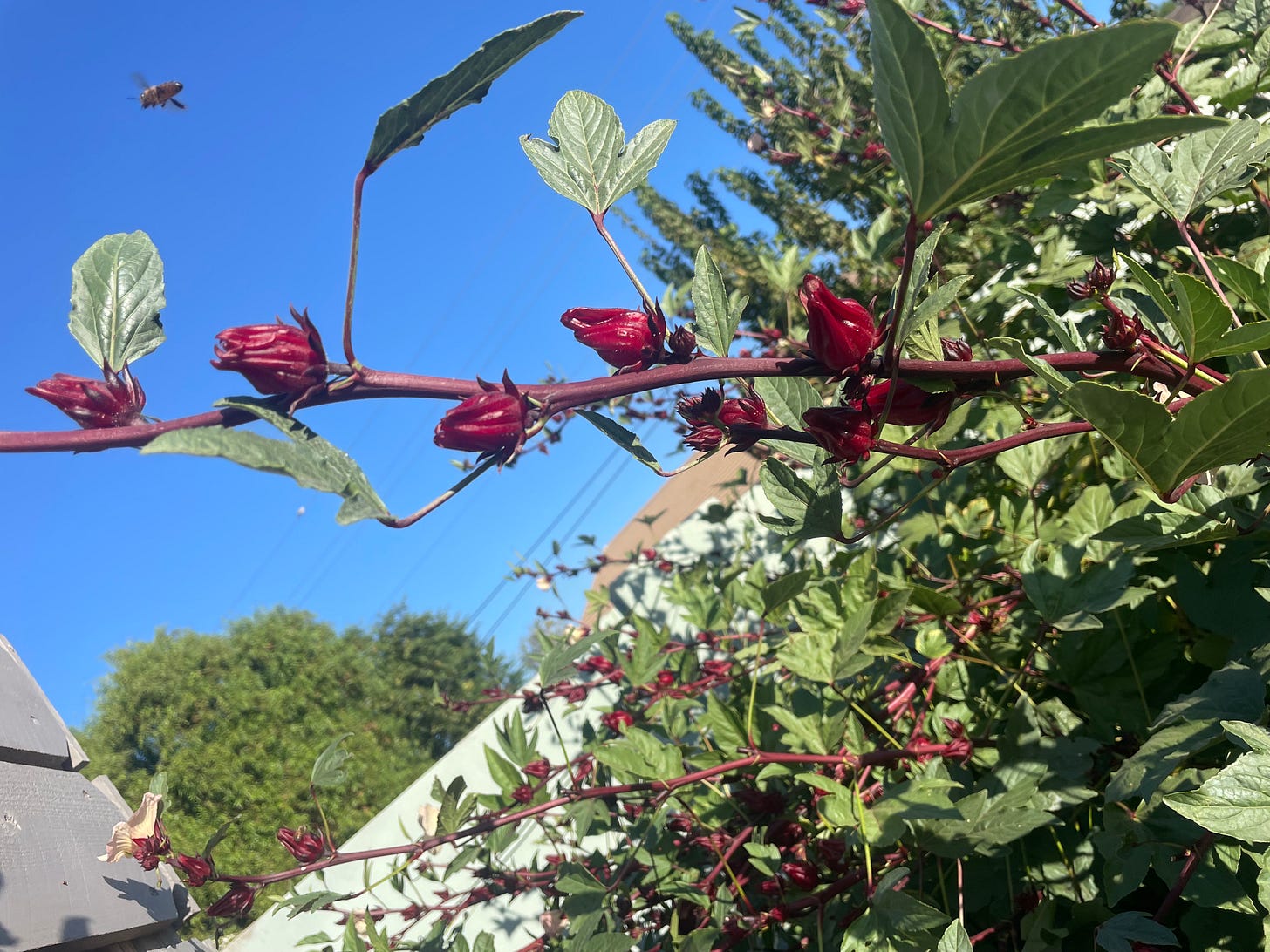
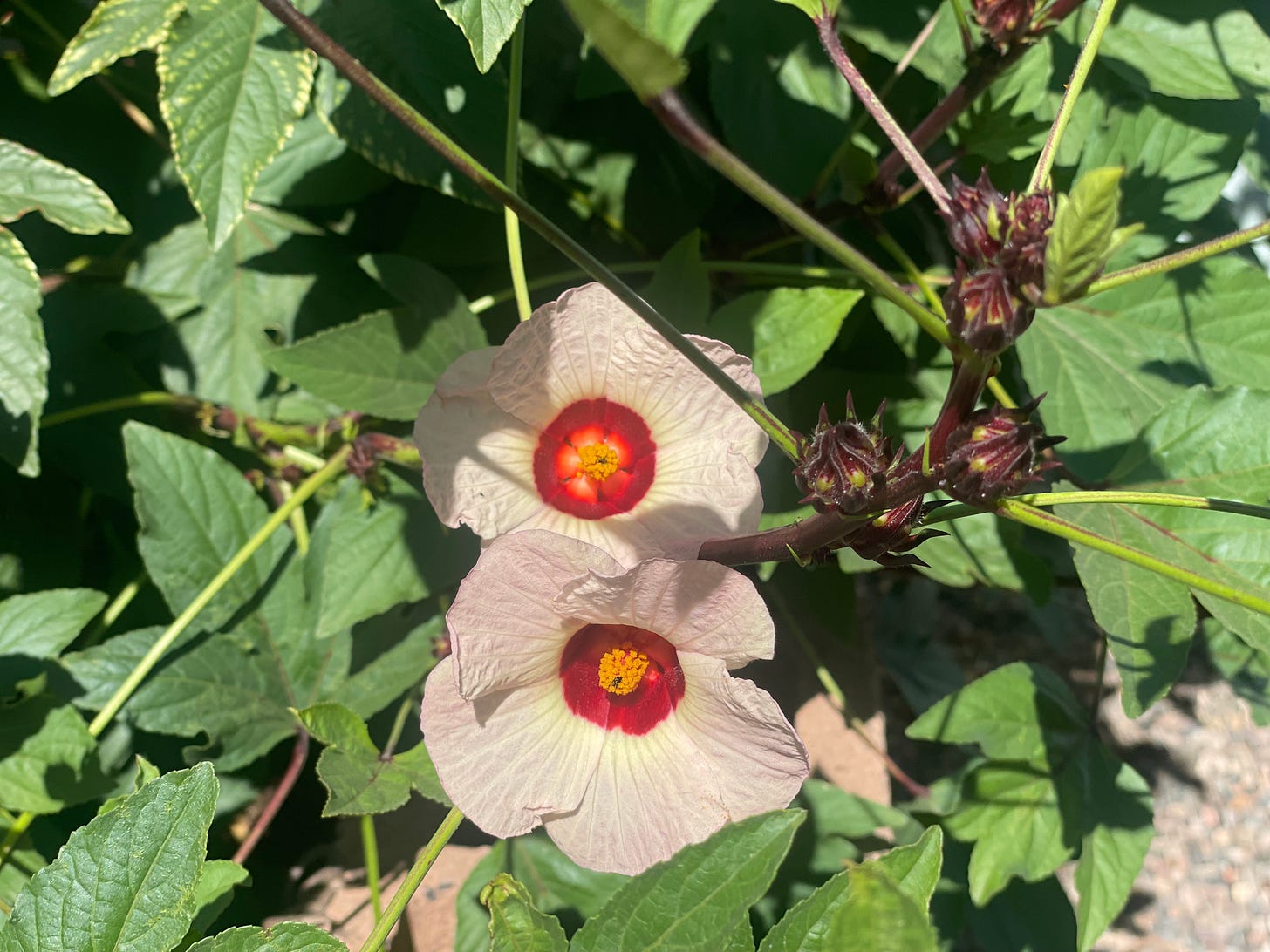
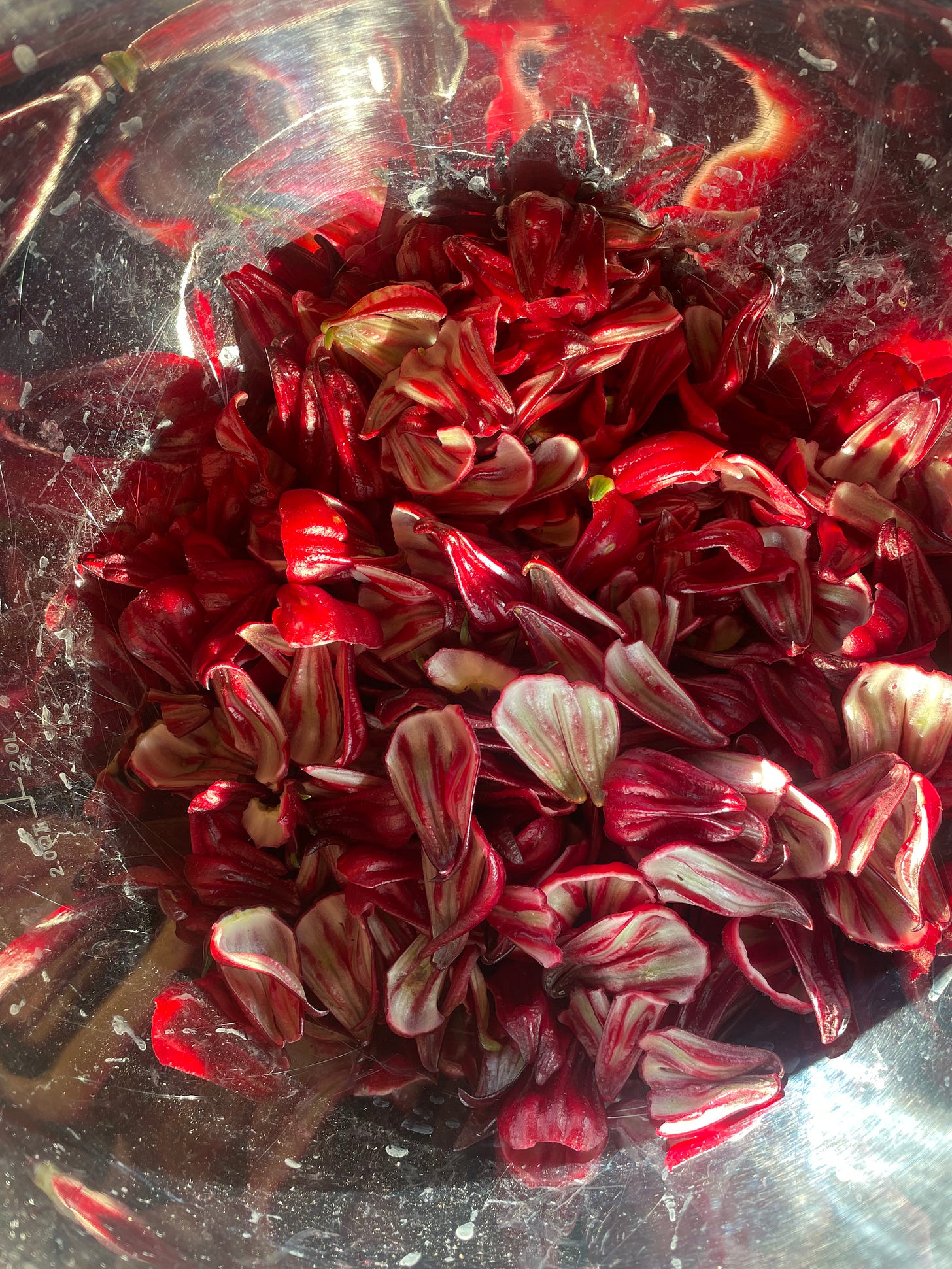
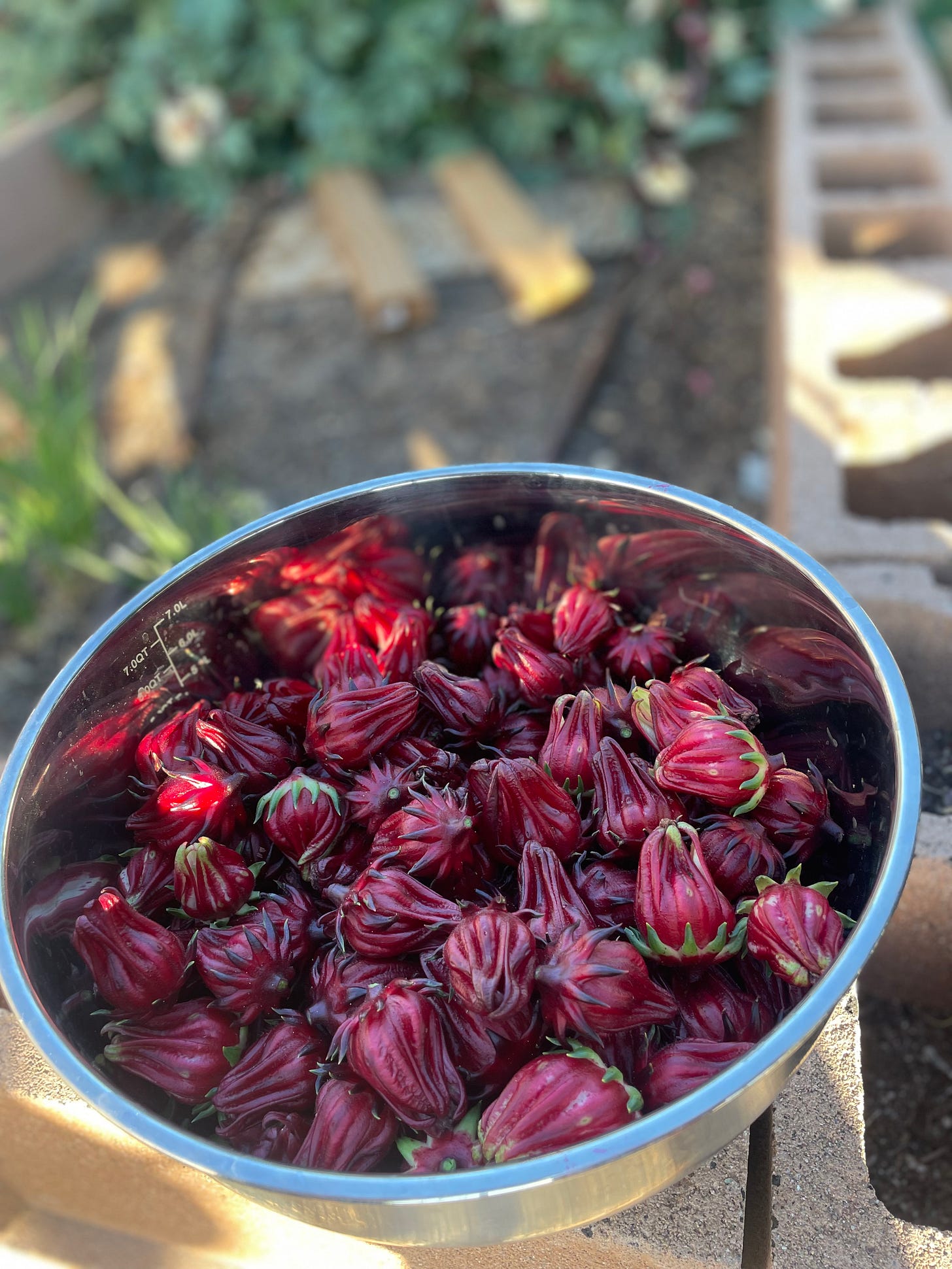
Oh how I love reading your substack essays!
I love hibiscus tea. It's one of my favorites just for the reasons that you listed because it has so many good qualities in there for you. You really can't go wrong!
I also love the taste of I've never cooked with it but seeing what You have done has inspired me! Having roast duck for Thanksgiving is amazing!
Because why not?!
Stuffing sounded incredible by the way.
I love both you guys on substack. I look forward to reading your essays every week.
Happy post Thanksgiving...
Enjoy your location where you are. Because everything is turned to Christmas now and I'm really not ready for it.